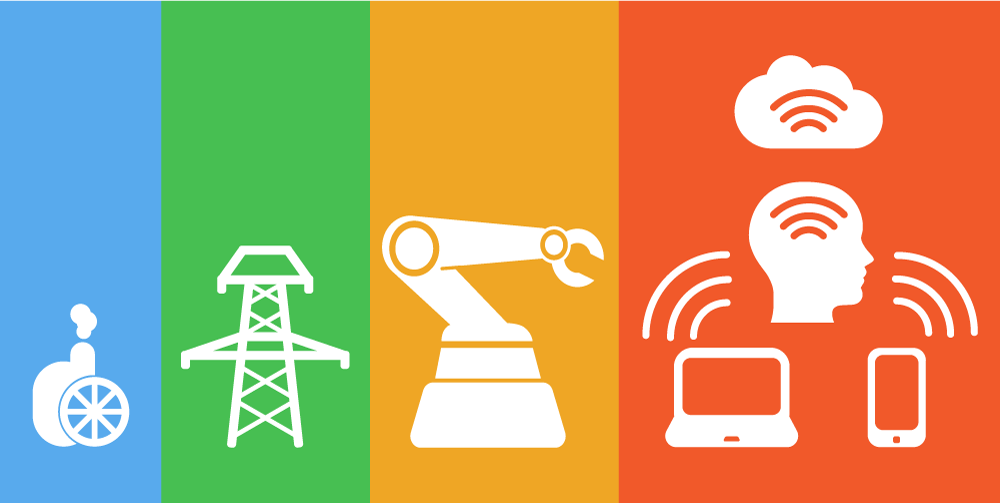Business Success in the 4th Industrial Revolution
The 4th Industrial Revolution is here and for business to survive it must adapt – quickly. To do so we must first understand the ‘Industry 4.0’ disruption; the impact and risk for business, and the necessary change for survival.

What is the 4th Industrial Revolution?
‘The 4th Industrial Revolution’ or ‘Industry 4.0’ is a topic that has been picking up momentum in discussion for the past few years – propelled to the forefront of conversation as the focal point of the World Economic Forum earlier in the year.
So what is it? Let’s take a look at the industrial revolutions that have come before:
| |
The 1st Industrial Revolution brought the transformation of labour, from hand-production to water and steam powered machines. |
| |
The 2nd Industrial Revolution: The Technological Revolution. The industrialisation of Society connected disparate existing networks, the movement of people and ideas, the electrification of processes and production lines. |
| |
The 3rd Industrial Revolution: Manufacturing goes digital. Technologies converge, web-based processes and new robots allow for ultimate customisation and bespoke production. |
| |
The 4th Industrial Revolution marks the blurring lines between the real world and the technological world. |
Advances in wearables, virtual reality, artificial intelligence, robotics, voice-controlled homes, Big Data Analytics and the Internet of Things – all are part of a new wave of ‘cyber-physical’ systems that are changing the playing field.
Human beings are connected to technology, to systems and to each other. The overlap of technology into our personal and professional lines is growing and it’s getting harder to see where one ends and the other begins.
What Does It Mean For Business?
Like any change, the 4th Industrial Revolution means disruption.
New technologies are evolving exponentially, increasing the demand on IT to deliver more, faster. With the old business & operational model, the gap between demand and delivery is going to get wider and wider.
The impact on business is already clear: only 12% of the Fortune 500 firms in 1955 were still in business in 2015. Companies that can’t meet demands will fail and there will be no shortage of competitors to take their place.
Adapt To Survive: Embrace the Disruption
Adaptation is critical, but it isn’t enough to simply react after demand has increased. The best defence is a good offence – businesses that survive will be the ones doing the disrupting.
The key is to act now; to reexamine the way we do business and change the approach to meet demands. This means more than simply digitizing systems as we did during the 3rd industrial revolution.
Industry 4.0 calls for digital transformation; innovation of products, services, the role of IT and the entire operational model. Connectivity is essential which will mean a shift to standardised, reusable assets such as APIs.
Many leading technology companies are already embracing the disruption and we’re thrilled to be partnered with them. Solutions such as MuleSoft’s AnypointPlatform are designed to support frictionless connectivity between systems and applications with API-led connectivity.
Business Intelligence tools such as IBM Cognos Analytics and SAP BusinessObjects offer powerful business insights. This business-critical data is vital for the process of reexamination and laying out the steps towards innovation.
Are you ready to embrace the disruption? Talk to the Influential experts about getting started.
Related:
- Bridging the IT Delivery Gap
- API 101: What Are Web APIs?
- Digital Transformation: Tools, Challenges & Goals [Infographic]
- Influential MuleSoft Partner Website
- MuleSoft Summit London 2016 – October 19th